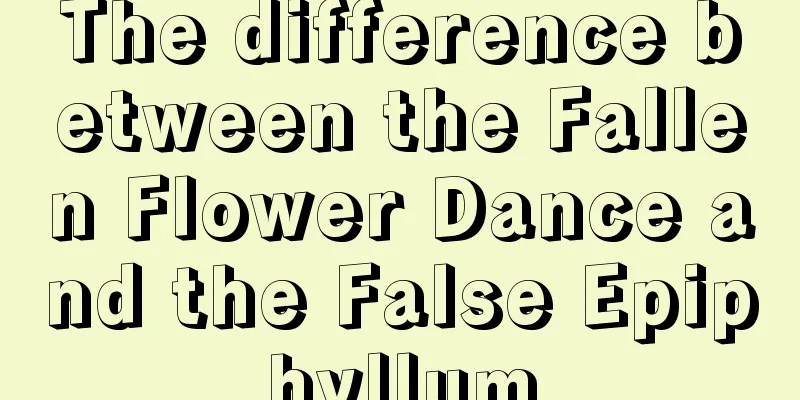The difference between the Fallen Flower Dance and the False Epiphyllum

The blooming period of the Fallen Flower Dance and the False Epiphyllum is differentThe Dancing Flower usually blooms in May and June. False Epiphyllum usually blooms in April and May. Of course, if you plant a pot of false epiphyllum and a pot of falling flower dancing on the balcony, they may bloom at the same time at the end of May. How do you distinguish them? The flower shapes of the Fallen Flower Dance and the False Epiphyllum are differentThe plant of Dancing Flowers is multi-branched and grows in a clump-like shape. The leaves are thick and fleshy, usually with 3-5 ribs, but can also be flat or irregularly angular, with purple-red edges. Its flowers are smaller and the receptacle is four-sided. The flower tube is short, the petals are single-layered, and the petals are arranged regularly and neatly. The flowers are pink and very similar to those of the false epiphyllum. They are difficult to distinguish but can be more accurately identified by looking at the nodes. The petals of the false night-blooming cereus are pointed, thin and straight. When it blooms, the petals spread out evenly in all directions, shaped like an open umbrella, and the petals are regular and neat. The flower tube is relatively short, and the flower colors are mostly pure red and pink. The edges of the nodes are rounded and green, the stems of young leaves are purple-red, and gradually turn green with dark red edges when they grow up. The colors of the Fallen Flower Dance and the False Epiphyllum are differentThe Falling Flower Dance has many colors and a fresh fragrance. The flowers of the false night-blooming cereus are generally bright red and have a light scent. The stem nodes ( leaves ) of the Fallen Flower Dance and the Pseudo-Epiphyllum are different.The nodes (leaves) of the Dancing Flower are ridge-shaped, usually with three or four edges, and no more than five edges, and the edges are also purple-red. Under grafting conditions, thicker, flatter nodes may appear. The nodes (leaves) of the pseudo-Epiphyllum are flat and oval, with smooth edges and purple-red color. |
<<: The cultivation methods and precautions of the Falling Flower Dance
>>: The difference between Falling Flower Dance and Christmas Cactaceae
Recommend
Sunflower cultivation technology, how to cultivate sunflower seedlings
1. Soil requirements It is tolerant to poor soil ...
What fertilizer to use for copper coin grass? How to use beer to water copper coin grass
1. Nitrogen Fertilizer The pennywort needs suffic...
Causes and control methods of white ears of wheat
Now is the harvesting stage of new wheat, and the...
How to make bonsai of Bauhinia
Material selection Generally, for bonsai plants, ...
Can I grow roses at home?
Can I grow roses at home? Rose is a light-loving ...
Cultivation methods and maintenance matters of old gardenia piles
How to grow gardenia into an old pile 1. Select s...
Time and method of corn planting in the north
Corn planting time in the north The climate in th...
Can calla lilies be grown in the bedroom?
1. Can I keep a bedroom? Calla lily, which we oft...
What is Zheergen?
What is Zheergen? Houttuynia cordata is an edible...
How to make succulent bonsai
Glass ball bonsai making Material preparation Soi...
How to prune a bird of paradise
Bird of Paradise, also known as Strelitzia regina...
Difference Between Citron and Lemon
1. Differences between branches The branches of c...
How to grow Staghorn Begonia
Cultivation method of Staghorn Begonia Staghorn B...
What are the benefits of growing lilac at home?
The ornamental effect of lilac Lilac has a unique...
How to propagate yellow jasmine
1. Seed propagation If you want to use the sowing...









